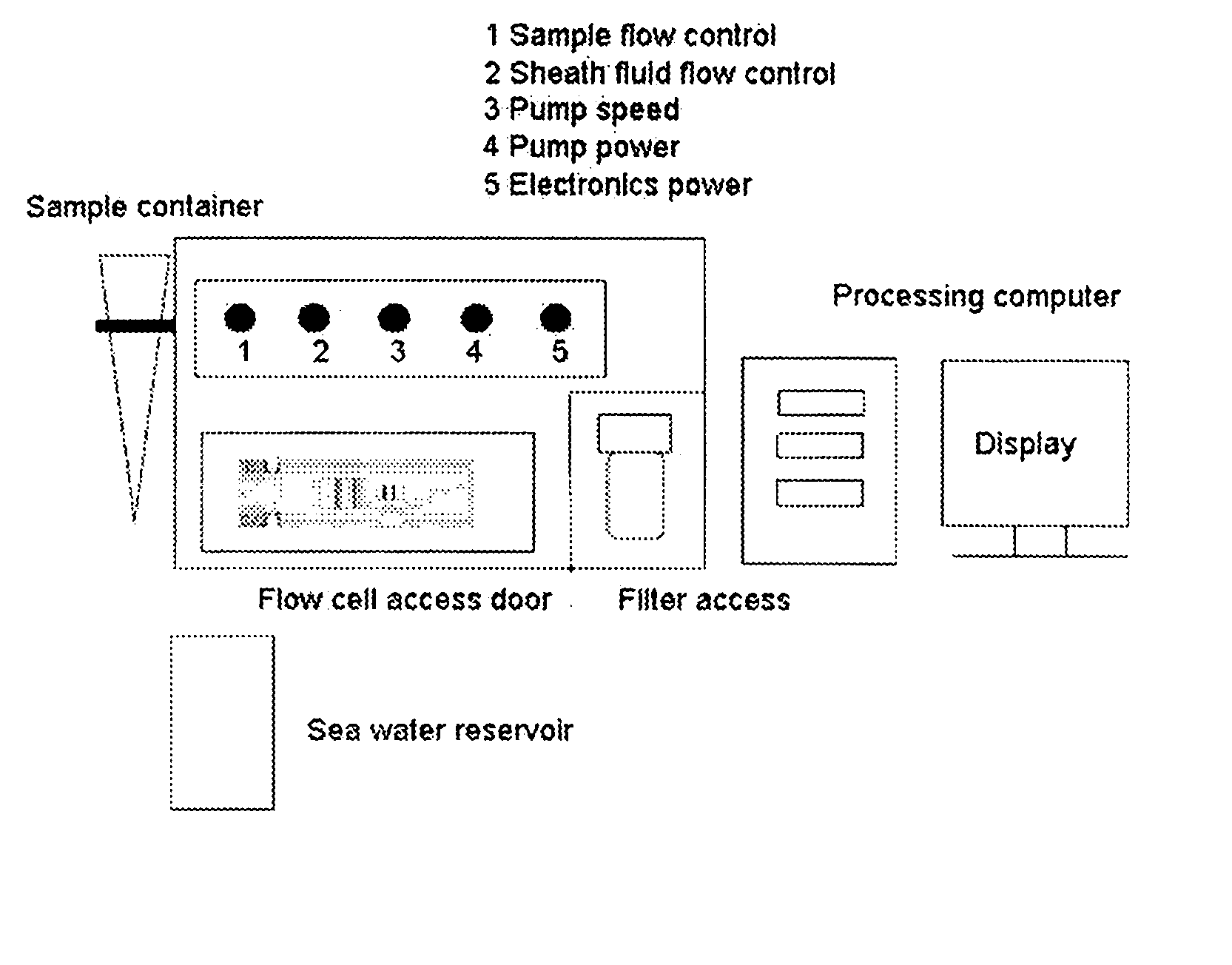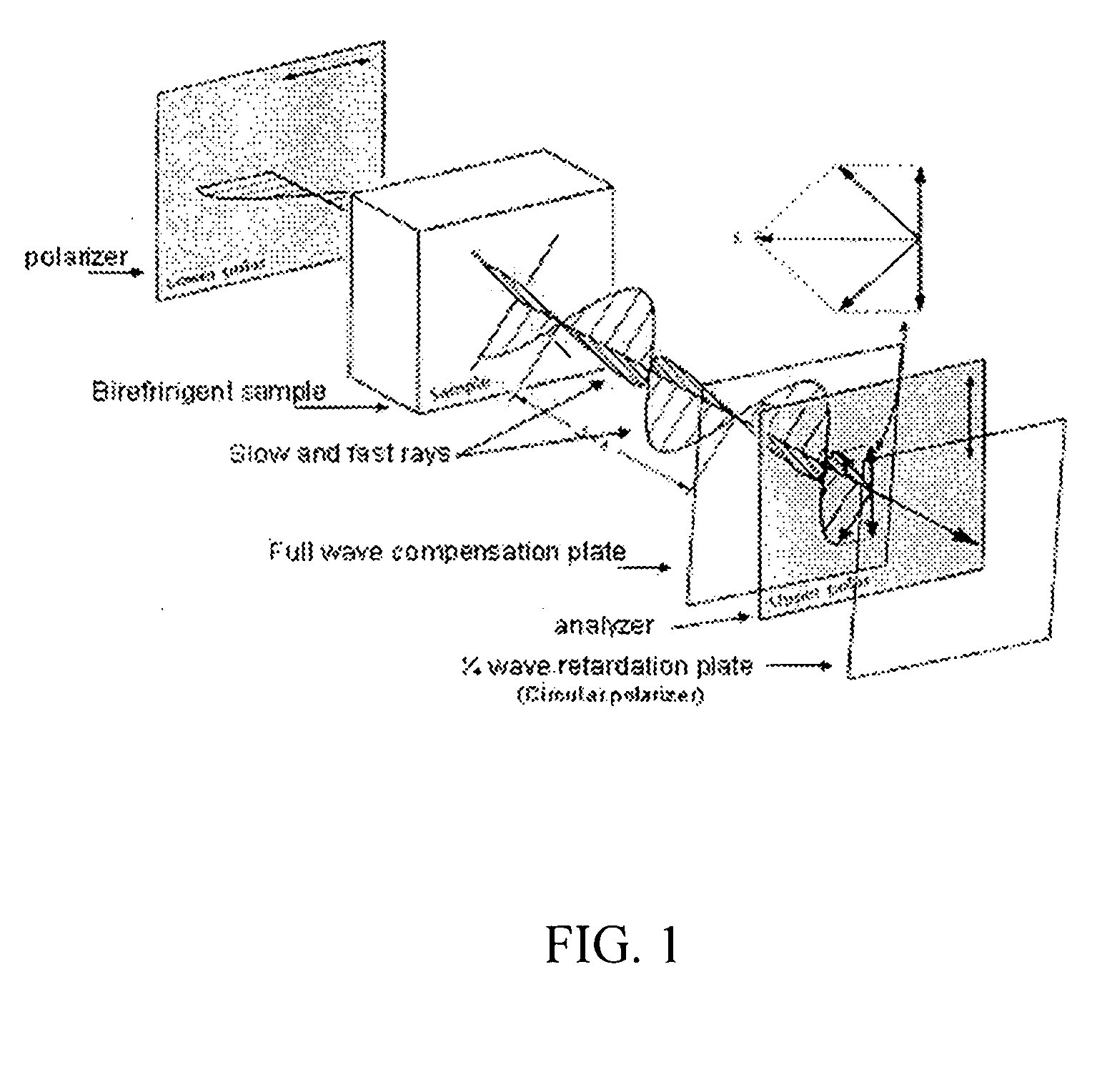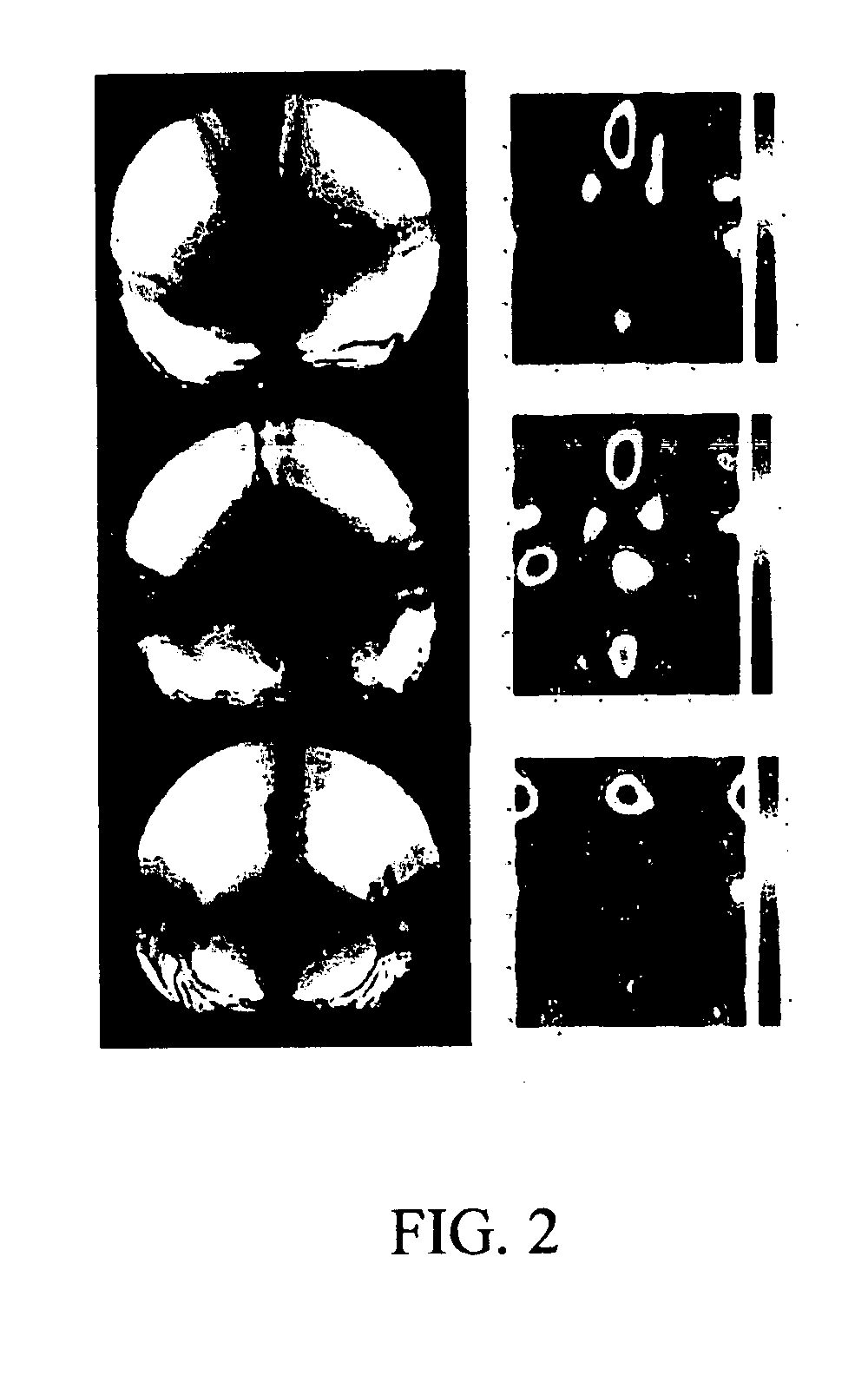Optical method and system for rapid identification of multiple refractive index materials using multiscale texture and color invariants
a multi-scale texture and color invariant technology, applied in the field of rapid, non-destructive, real-time method and system for identifying and classifying sample materials having high-order refractive indices, to achieve the effect of rapid, accurate identification and classification
- Summary
- Abstract
- Description
- Claims
- Application Information
AI Technical Summary
Benefits of technology
Problems solved by technology
Method used
Image
Examples
example 1
[0137] Using Gabor wavelet filters, color angles may be determine mathematically without a lookup table. The following is the general:
[0138] 1. Calculate mean values of Gabor transforms in RGB (or HSV) space.
[0139] 2. Calculate standard deviations of Gabor transforms in RGB (or HSV) space.
[0140] 3. Calculate 3 color angles, 3 color-edge angles, and 3 standard deviations of dot products of the three color bands (RGB or HSV) for each image.
[0141] 4. Create the 201 dimensional feature space for vertically oriented images, or 1113 dimensional feature space for randomly oriented images using very low Gabor center frequencies (less than 0.05).
[0142] 5. Use the feature set of 7. as input for a soft-margin Support Vector Machine (SVM) with Gaussian RBF kernel. Choose Gaussian RBF parameter, gamma, equal to 2.0 and SVM regularization parameter=70.0: [0143] A Identify plausible species for sample area. [0144] B. Create a training set using at least 60 images from each species. [0145] C. ...
PUM
 Login to View More
Login to View More Abstract
Description
Claims
Application Information
 Login to View More
Login to View More - R&D
- Intellectual Property
- Life Sciences
- Materials
- Tech Scout
- Unparalleled Data Quality
- Higher Quality Content
- 60% Fewer Hallucinations
Browse by: Latest US Patents, China's latest patents, Technical Efficacy Thesaurus, Application Domain, Technology Topic, Popular Technical Reports.
© 2025 PatSnap. All rights reserved.Legal|Privacy policy|Modern Slavery Act Transparency Statement|Sitemap|About US| Contact US: help@patsnap.com



